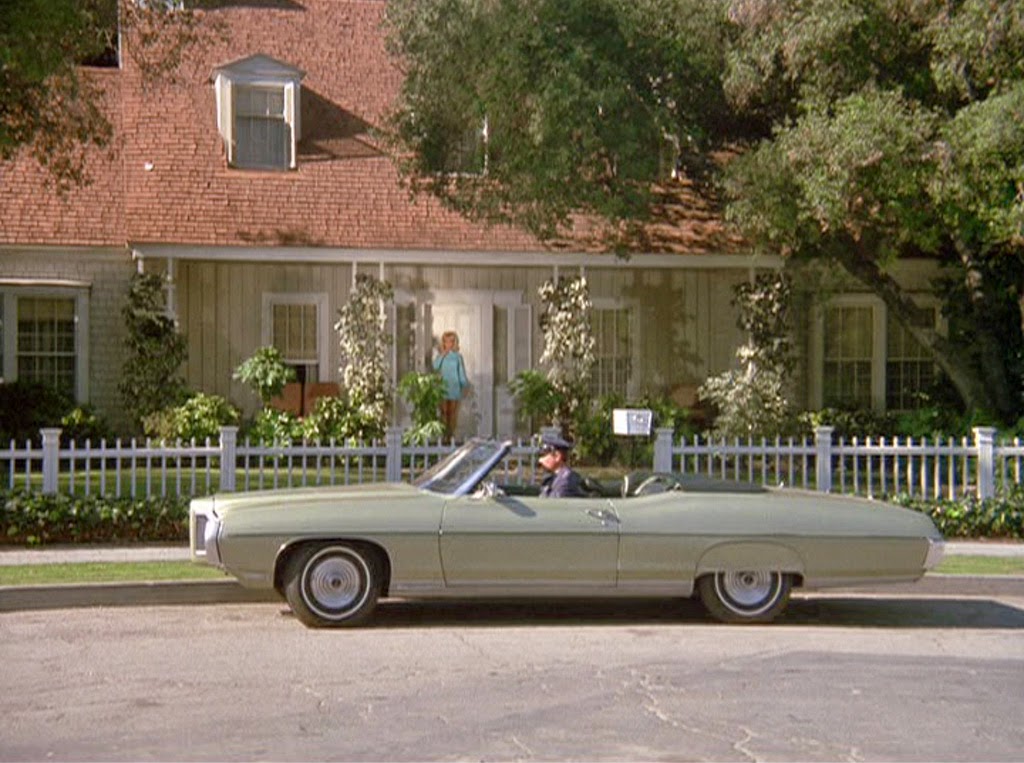Most Saturday mornings
you’ll find me driving around Las Vegas listening to a 1970s edition of American
Top 40 with Casey Kasem on Sirius
XM. I live in the past as much with music as I do with television.
Hearing Casey count down
tracks from Fleetwood Mac, Andy Gibb and the Ozark Mountain Daredevils is a
happy reminder of tuning into the same broadcasts when they originally aired,
as well as a way to remember Kasem in his element, before recent months have
turned him into a post-mortem punch line on par with baseball great Ted
Williams.
Kasem was certainly best
known as a radio personality, but he also had a successful and somewhat bizarre
acting career that also deserves commemoration. He was, to borrow a phrase from
Nick at Nite back when that network was worth watching, part of our television
heritage.
Here is just a sampling of
the shows where he appeared and the roles he played over an eclectic career.
Norville “Shaggy” Rogers
Outside of daytime drama
you rarely find an actor portraying the same character for 40 years. Casey
Kasem created the voice of Shaggy for Scooby Doo, Where are You when it debuted in 1969, and kept coming back for
revivals and adaptations and direct-to-video DVDs until 2009. That’s a lot of
“Zoinks!” From 2010 to 2013, he voiced Shaggy’s father, Colton, in Scooby
Doo: Mystery Incorporated.
Kasem’s voice was often
described as unmistakable. But to me Shaggy’s high-pitched quaver sounds almost
nothing like the soothing, resonant voice you heard on the radio, or in
voiceover the commercials he narrated for Heinz ketchup or Dairy Queen or Oscar
Meyer. The difference was so distinct that Kasem often voiced secondary
characters in Scooby Doo shows
(like the various cops who drag the phony monster to jail) and if you didn’t
know you’d never suspect it was the same performer.
Dick Grayson/Robin
This was Kasem’s second
most famous animated character, one that predates his time in the Mystery
Machine. He played an earnest Boy Wonder in 1968’s The Batman/Superman Hour, and reprised the role in Hanna Barbera’s
long-running Super Friends
shows. Super Friends and Scooby
Doo were Saturday morning staples
throughout the 1970s – no wonder my generation grew up with Kasem’s voice in
our heads.
Adolf Hitler
In 1974, when Don Rickles
was the guest of honor on one of Dean Martin’s legendary roasts, Casey Kasem
was introduced as “the man who writes every word that comes out of Don’s
mouth.” Out he strolled as Hitler (not in Nazi garb, but in a purple smoking
jacket), to claim that Rickles is “the only man who has bombed more places than
I have.” It’s a bizarre moment but Casey does his best to commit to the
character.
Peter Cottontail
Here Comes Peter
Cottontail (1971) was the first of
three Rankin-Bass Easter specials, none of which are as fondly recalled as Rudolph
the Red-Nosed Reindeer or Santa
Claus is Coming to Town. Still,
here’s a chance to hear Casey sing, and you try to find another actor who
played both Hitler and Peter Cottontail.
Charlie’s Angels
The season 3 episode
“Winning is for Losers” finds the Angels on bodyguard duty, after a
professional golfer receives death threats. Jamie Lee Curtis plays the golfer,
the same year she starred in Halloween. And Casey Kasem appears as sportscaster Tom Rogers, who has a
sinister secret but may or may not be the killer. Despite the appearances of
Curtis and Kasem, the episode is most memorable for a scene in which petite
little Kris Munroe (Cheryl Ladd) wrestles an alligator.
The Hardy Boys/Nancy
Drew Mysteries
In the two-part thriller
“Mystery of the Hollywood Phantom,” Kasem plays struggling actor Paul Hamilton
who, as in Charlie’s Angels, may
or may not be a murderer. In his first scene he impersonates Peter Falk as Lt.
Columbo, and pulls it off surprisingly well.
Saved By The Bell
Casey played himself in
more than 50 television appearances, including two episodes of this awful but
strangely beloved series. In “Dancing to the Max,” he appears as the host of a
dance contest, which is somehow won by Screech. Apparently no one saw Elizabeth
Berkeley on Dancing With the Stars.
Or Showgirls.
These selections are just a small
sampling of Kasem’s TV work – if you’re a viewer of the various retro TV
channels you’ll also spot him in episodes of Fantasy Island, Hawaii Five-O, Ironside, Quincy and My Two Dads. And if you need a fix between reruns please join
me Saturday mornings on the Sirius 70s on 7 channel. I’ll bet it’s been years
since you’ve heard “Convoy” or “The Night the Lights Went Out in Georgia” on
the radio.
As you do, say a little
prayer if you’re so inclined that Casey Kasem’s body will soon be at rest, as
his soul ascends to the stars he always encouraged us to reach.








